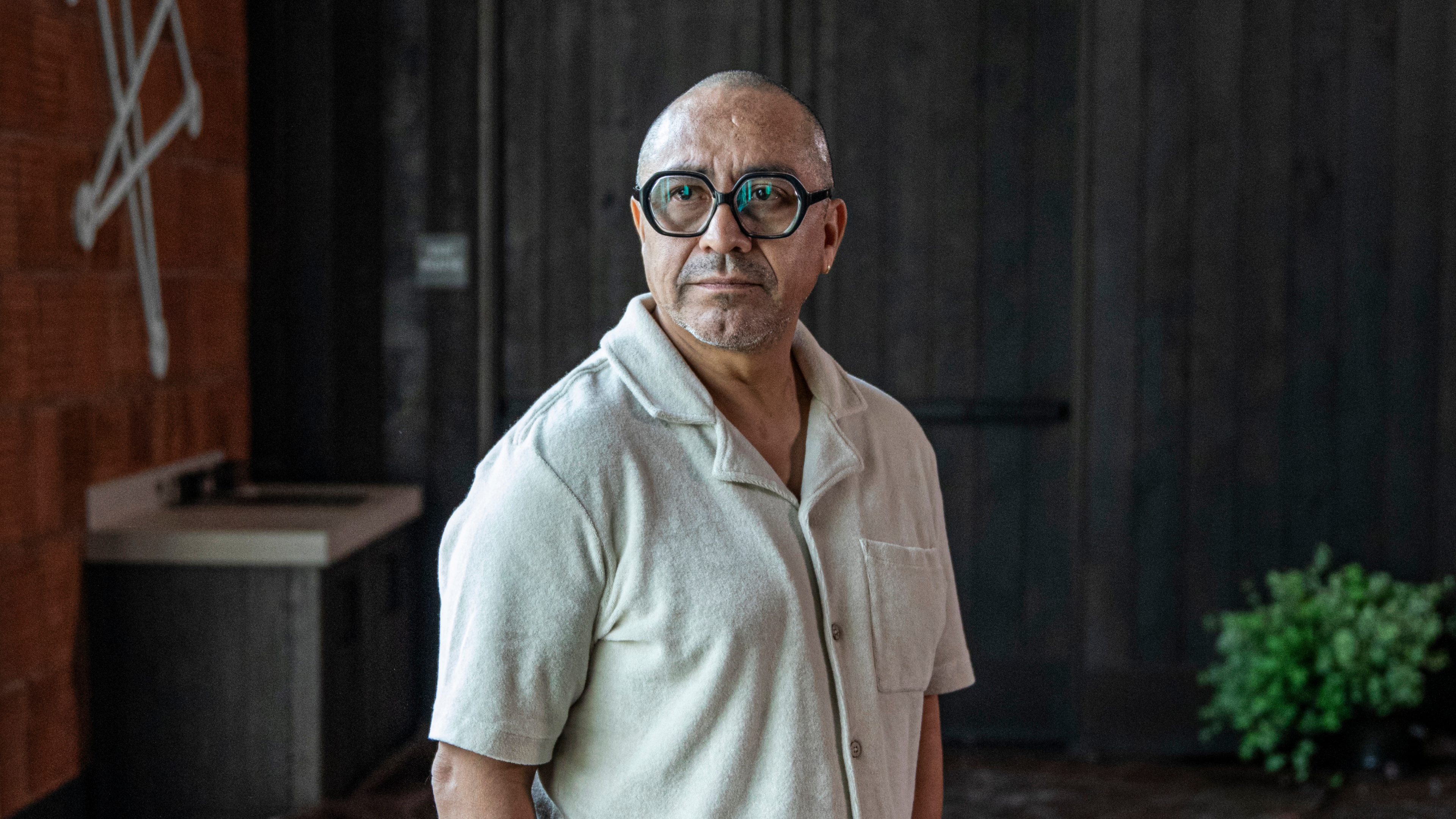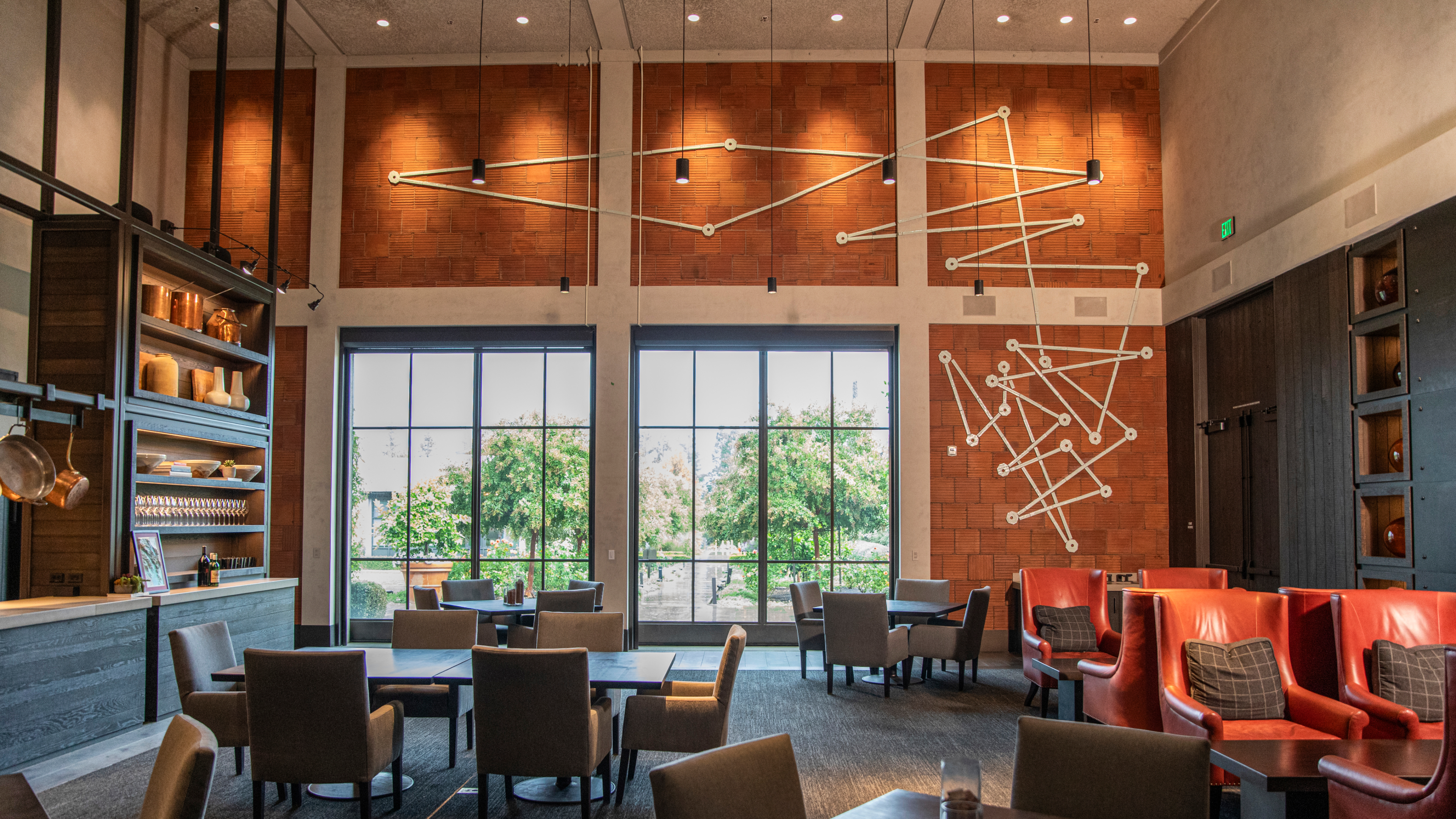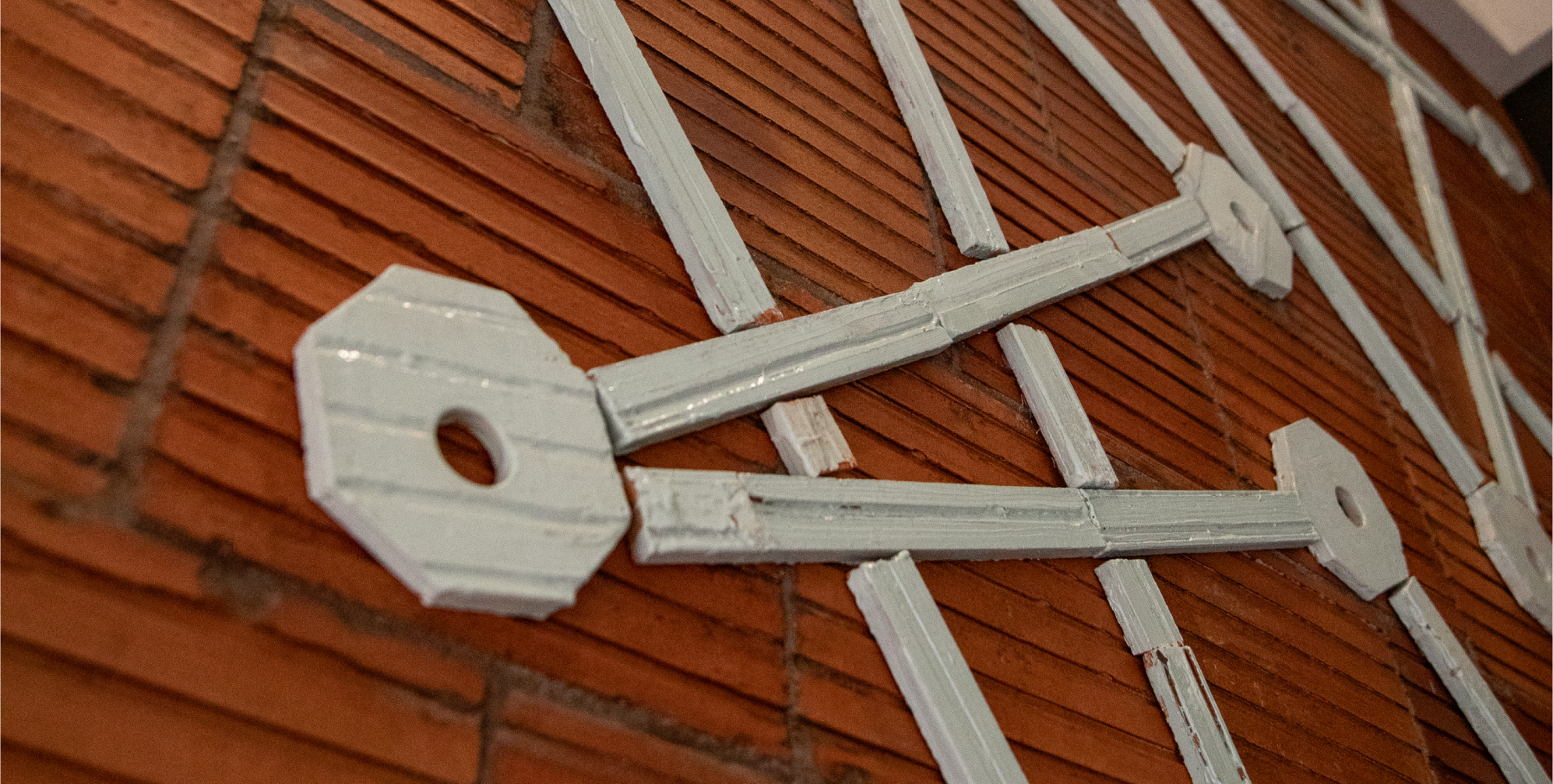

A site-specific installation by Abraham Cruzvillegas at Louis M. Martini Winery
Two Untitled Maps (An Alchemical Self Portrait) functions as a metaphorical “parenthesis,” the two maps encapsulating the interplay between nature and culture. By positioning one map inside and the other outside, the installation invites viewers to traverse and reflect on the space between, mirroring the migratory journeys central to Napa’s identity. This dialogic structure resonates with the alchemical process of winemaking, transforming nature and culture into a shared sensory experience, and offering new ways of understanding place and history.
Located on the exterior façade of the Winery
This map represents the ecological tapestry of Napa Valley, focusing on its flora and fauna. Indigenous species like oaks, manzanitas, and native grasses intertwine with transplanted species brought to Napa through human intervention, such as grapevines and ornamental plants. Its geometric lines radiate outward like a rhizomatic root system, suggesting the interconnectedness of these elements, with circular nodes symbolizing points of ecological intersection, such as habitats or migration paths for animals like snakes, coyotes, and gophers.
The carving process itself evokes the hidden, subterranean world of roots and burrows, recalling the paths of creatures like snakes and coyotes as they navigate the land and peeling back the unseen layers of Napa’s landscape to reveal the ecological history and ongoing evolution of the land.


Located in the Tasting Room
This map is a relief sculpture created from repurposed terracotta tiles salvaged during the 2019 renovation of the winery. These tiles, hand-painted in a custom cerulean glaze, form lines that roughly trace the valley’s geographical contours from Calistoga to Oak Knoll. The design features 25 octagonal nodes marking significant cultural and historical touchpoints connected by rectangular tiles which represent pathways between these landmarks, symbolizing the diverse heritages and migratory histories of the region. These include references to the indigenous peoples who originally inhabited the land, present day appellations, towns, and communities.
By using materials with visible traces of their previous functions, Cruzvillegas imbues the map with a layered sense of time, reflecting the evolving use of the building itself — from a 1933 wine processing facility to its current role as a hospitality space. In so doing, the map also ties the valley’s present to its past, offering a tactile link to its built heritage.



Abraham Cruzvillegas investigates place, material, history, migration, and transformation through his multi-media practice, which spans sculpture, performance, drawing, painting, video, and writing. Cruzvillegas’ art inhabits the liminal space between categories — a space where we do not just find the possibility of one thing, but rather, we discover the possibility of infinite things — infinite experiences and permutations, and interpretations and associations, all accessible within the present moment of the encounter.